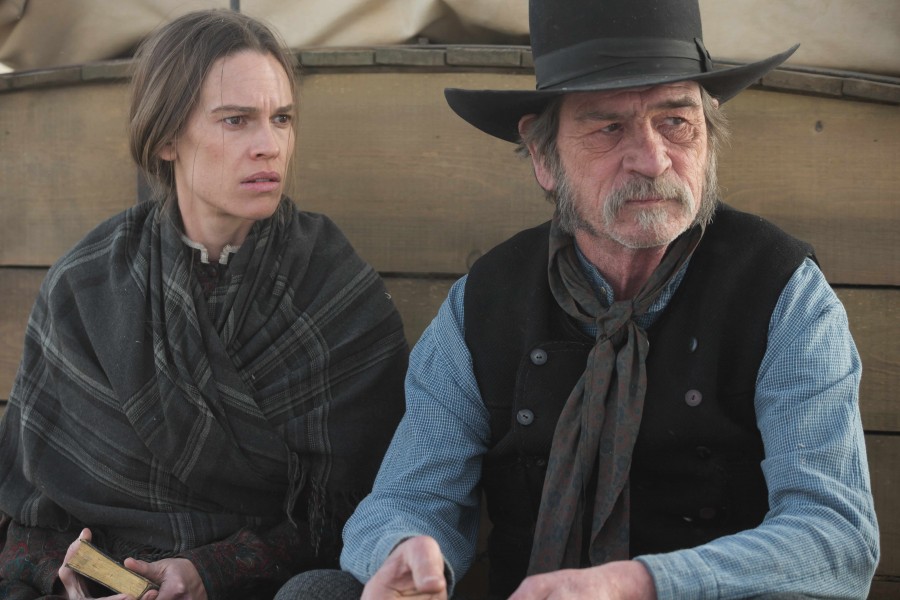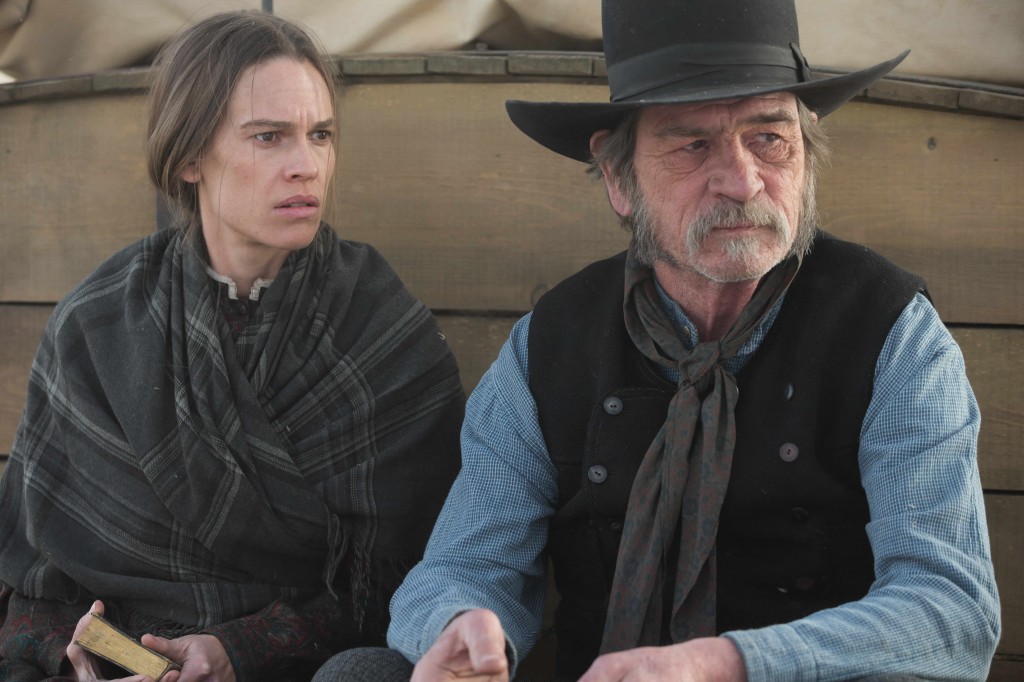Tommy Lee Jones certainly has an eye for cinema.
Director: Tommy Lee Jones
Cast: Tommy Lee Jones, Hilary Swank
Rating: 15
Running time: 122 mins
Release date: 20th November, 2014
Unlike the atmospheric lyricism of John Hilcoat’s THE PROPOSITION (2005) or Andrew Dominik’s epically detailed character study, THE ASSASSINATION OF JESSE JAMES by the Coward Robert Ford (2007), Tommy Lee Jones’ The Homesman, based on a novel and a script he co-wrote, resists the route of the artistic, genre-challenging Western. Even though it attempts to highlight the lives of women during the early years of frontier life, it does not betray its traditionalist lineage.
It is a Western ‘road movie’, focusing on a bleak journey across frontier America. The journey involves getting three women of differing mental maladies to a haven, away from unforgiving, frost battered outpost towns. Along the way, the journey plays its part in the self discovery process of the protagonists and, in turn, acts as the engine for character development.
The film opens with striking long shots of the barren topography, capturing the expanse of undisturbed land. In this sequence, both the transcendence of nature and its connection with human immanence – its potential cultivation – are beautifully symbolised. Scenic shots of the vast landscape recall the hauntingly arid plains depicted in classics like John Ford’s The Searchers (1956).
Tommy Lee Jones certainly has an eye for cinema. The mise en scene, supplemented by careful lighting and hard shadows, resembles an immaculate theatre production. Early on, a particularly striking diorama of the three unstable women, out in the cold, perfectly captures their solitude and despair. The director’s visual flair binds well with a powerful yet unobtrusive score. It’s traditional and downbeat, reliably syncing with the pace of the film.
The narrative doesn’t complicate itself: two very different characters, Lee Jones’ George Brigg’s, an opportunist and realist and Hilary Swank’s Mary Bee Cuddy, a frustrated head-strong singleton, team up to take the three troubled women to a religious sanctuary. Hilary Swank engages throughout, adding another powerful performance to her impressive career. Her chemistry with Lee Jones is more functional than spectacular, though likely due to his uncharacteristically flat performance.
The film might well draw ire from feminist circles. On the one hand it is clearly sympathetic to women and their harsh travails in such an unforgiving time period, yet on the other hand its depiction of females may, to some minds, interpret them as weak, slavish, and at the mercy of men’s interest. Most controversial is the trajectory of Mary Bee Cuddy’s character. At first glance, Cuddy is a strong female – one that gives George Briggs raison d‘etre no less – but her mind steadily deteriorates, and it is explicit that the key factor is her fated single life, additionally implying that what all the troubled women needed is a strong, capable male in their lives.
The film has a number of curious flaws. Tommy Lee Jones makes the strange decision to cast well known, quality actors in meagre cameos. Both John Lithgow and Meryl Streep are criminally under used, whereas James Spader delivers a horrifically hammy performance that feels entirely out of place. At times the film oscillates wildly in tone. At one moment it is light hearted, verging on comical; the next we are subjected to a shocking scene involving a baby and an outhouse.
It’s unclear whether Tommy Lee Jones is unintentionally crossing wires, or he is quietly developing some sort of off-kilter auteurship. The film, ultimately, doesn’t fulfil its blatant desire to be an academy vehicle, as hard as it tries, and it is debatable whether the it is genuinely empathetic or an out-and-out vanity piece. That being said, THE HOMESMAN is unique and visually striking enough to to be worth giving it a go.
Verdict






























